Follies were built to show off and enhance a landscape. Georgian grandees would build follies in the grounds of their country parks – a Dionysian temple here, a medieval castle keep over there, with a Palladian bridge to connect them over a re-routed river.
The grounds of a country house was simply not complete without a folly and many of our finest stately homes have at least one.
Here are the best follies to visit.
Best follies to visit
Stourhead
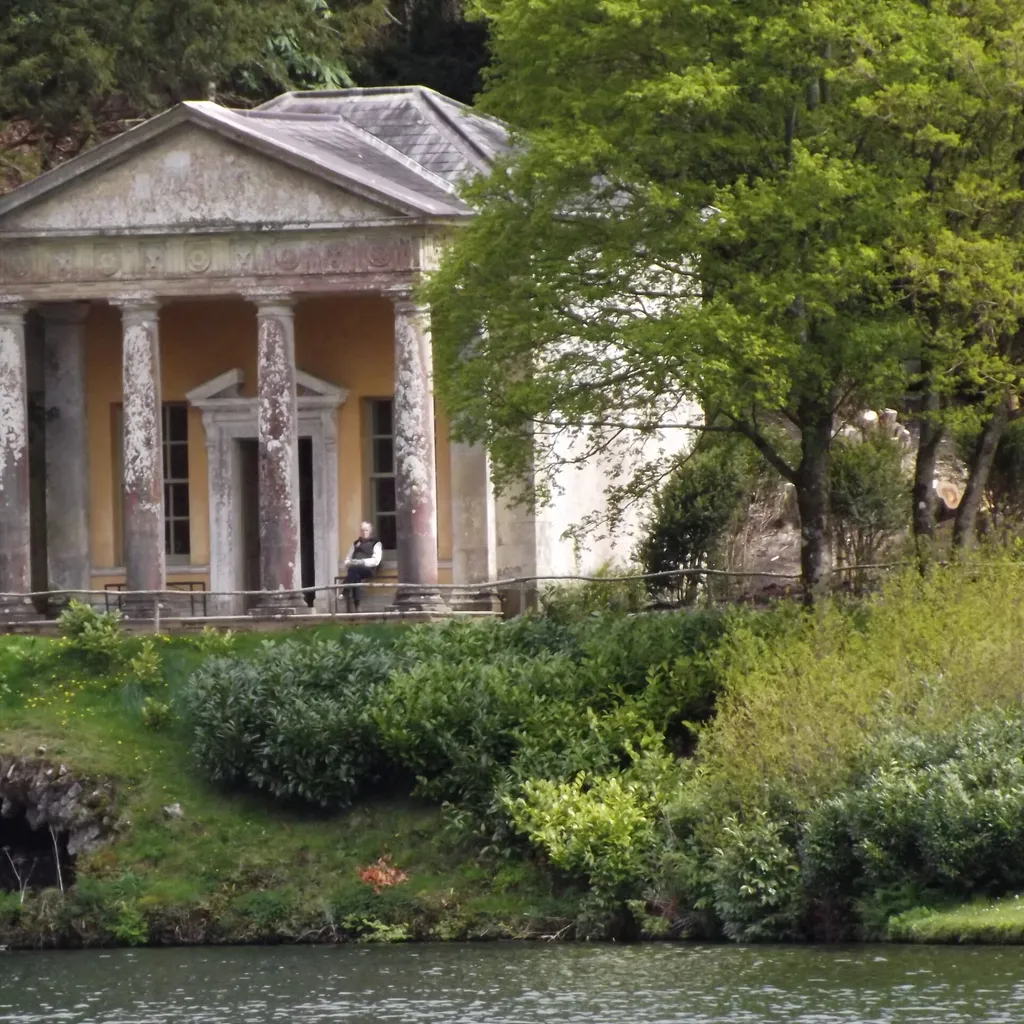
Location: Stourhead, Wiltshire OS Explorer Map ref: ST 776 340
With 10 follies on one estate, Stourhead in Wiltshire is a mecca for folly enthusiasts. Henry Hoare II was a very wealthy banker who inherited Stourhead’s Palladian manor house from his father in 1725, aged just 19.
The young man’s collection of follies includes the Temple of Flora and the Pantheon, the latter being the largest in the gardens, built by Henry Flitcroft in 1754 and based on the Pantheon in Rome.
There’s also the Greek-influenced Temple of Apollo, the Palladian Bridge, the Gothic Cottage, the ragged rocked Grotto, and the triangular King Alfred’s Tower. Plus there’s St Peter’s Pump, a 30m (100ft) tall Bath stone obelisk topped with a copper Sun God figurine that acts as a lightning conductor, and the Bristol High Cross, built in 1373 in Bristol and moved to Stourhead in 1768.
Triangular Lodge
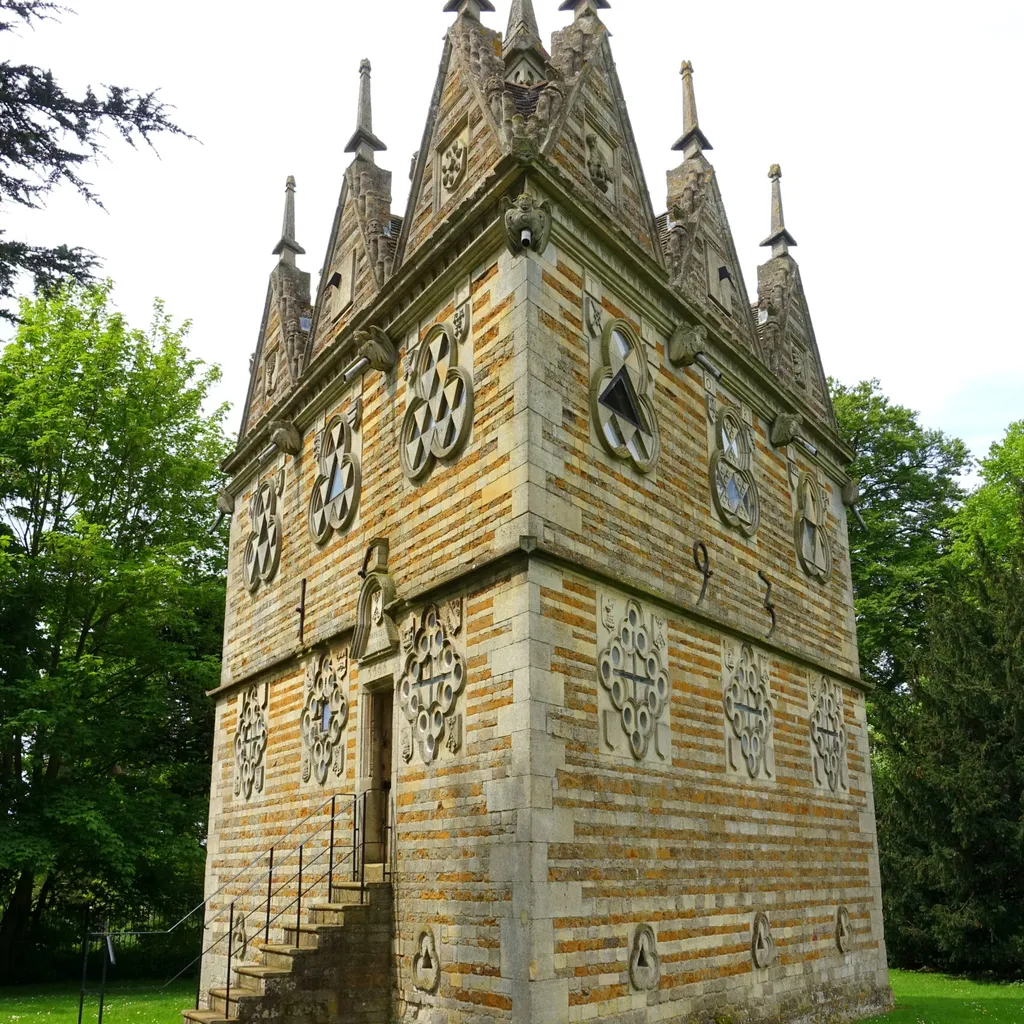
Location: Rushton, Northamptonshire OS Explorer Map ref: SP 830 830
Refreshingly impractical in shape, the Triangular Lodge shows true folly in its design – imagine trying to vacuum the carpets in those three corners. This bizarre three-sided building looks like a normal four-sided house if you’re looking at any of the faces square on.
This splendid Gothic outhouse was designed by Sir Thomas Tresham and constructed between 1593 and 1597. Tresham was a Roman Catholic and the number three in this design symbolises the Holy Trinity. The building has three floors, trefoil windows and three triangular gables on each side. On the entrance front is the inscription Tres Testimonium Dant (there are three that give witness), a Biblical quotation from the Gospel of John, referring to the Trinity.
Rogers Tower
Location: St Ives, Cornwall OS Explorer Map ref: SW 485 350
Looking more like a large sandcastle than an actual stone structure, Rogers Tower may not be an imposing building, but it is nevertheless more than worthy of being in our top 10, if only to prove that small really is beautiful.
Found on the B3311 between Penzance and St Ives, this square of irregular stones is located high on an escarpment overlooking a quarry. It was built in the 18th century for local landowner Mr Rogers to admire the view, all the way to St Michael’s Mount.
Jack The Treacle Eater folly
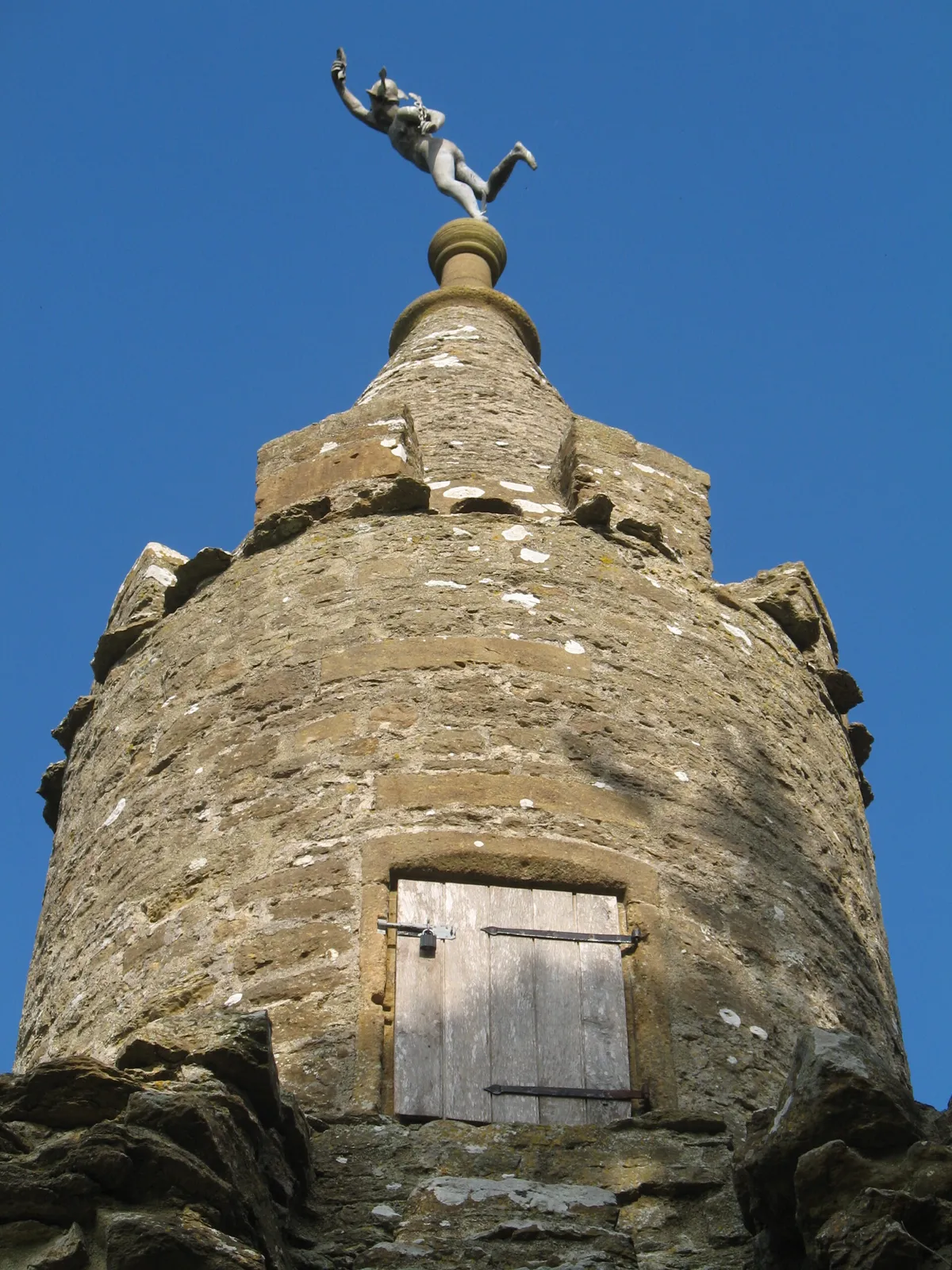
Location: Yeovil, Somerset OS Explorer Map ref: ST 565 142
Out of the four freaky follies on show in Barwick Park, none are more odd than Jack The Treacle Eater, so named after a famous local runner who trained on a diet of treacle. And this glucose-glugging athlete would need the sugar rush to keep up his stamina on his 110-mile sprint to London to deliver mail for the Messiter family, who owned Barwick House.
On top of the tiny tower on top of a jagged rocky arch, is the running figure of Jack. The date of construction is unconfirmed, but it’s thought the four Barwick follies were built in the late 1700s, possibly by the unemployed of the area. The follies are now owned by Somerset County Council, who snapped them all up for just £5 in the 1990s, a price that was anything but folly.
Charborough Tower

Location: Charborough estate, Dorset OS Explorer Map ref: SY 929 975
There’s a real glut of follies in Dorset, but the one we’ve picked out as special is the tall and intimidating Charborough Tower, that rises above the tree tops in Dorchester. Scarily imposing, this Gothic tower was built in 1790 by the Drax family, who still own the Charborough estate to this very day.
The tower has a pleasing octagonal shape with five floors. It also features a fantastic spiral staircase from which, on a good day, you can see the four surrounding counties. It’s said that Thomas Hardy used the tower as a location for his 1882 novel Two on a Tower, and, after being struck by lightening, the structure was rebuilt to its current height of 30m (100ft) in 1839.
Sadly the tower’s only open to the public occasionally at the discretion of the Charborough Estate.
Brynkir Tower
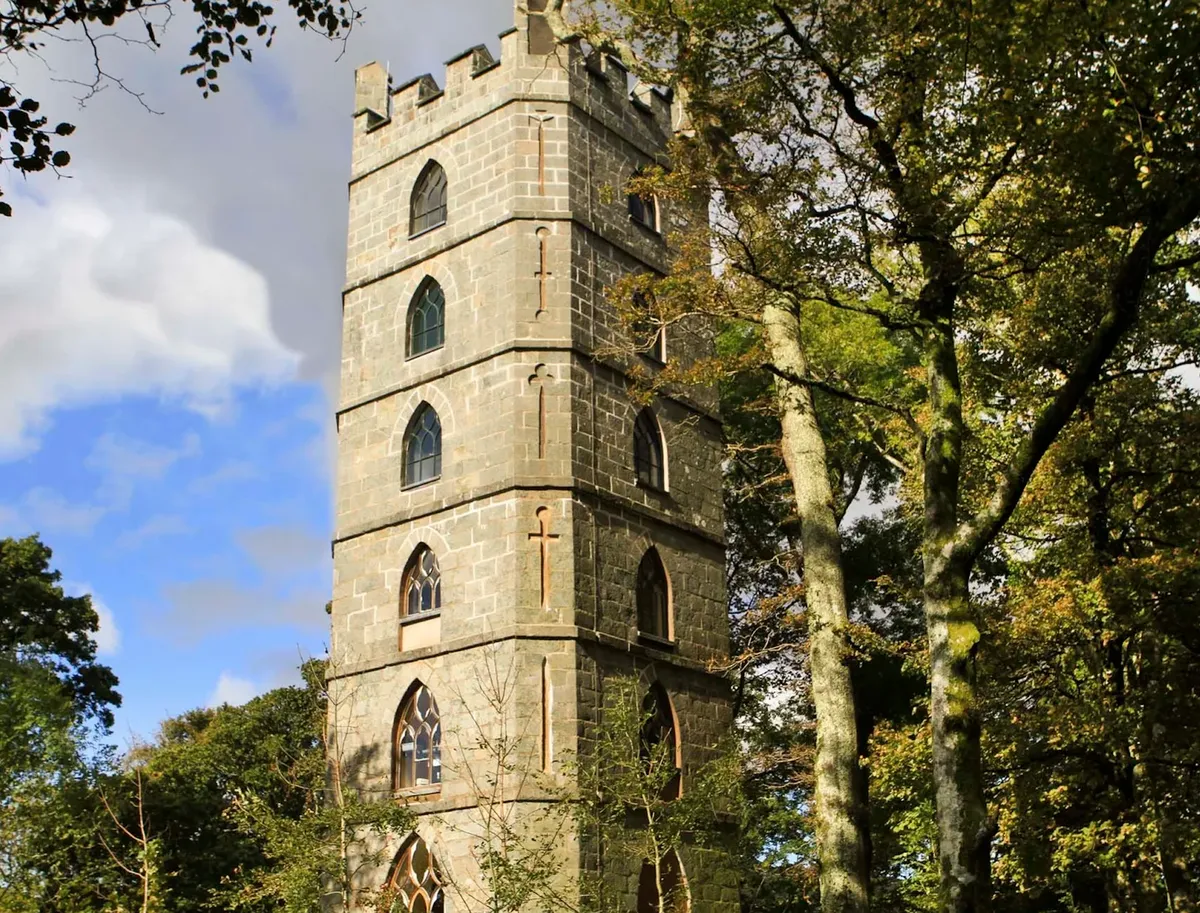
Location: Dolbenmaen, Gwynedd OS Explorer Map ref: SH 524 436
Wales is spoilt with small, medium and large castles in various states of ruin and disrepair, so it’s perhaps not surprising that the green, green grass of home also has its fair share of follies. Out of all the quirky buildings and outhouses, one of our favourites is the Brynkir Tower in Dolbenmaen, believed to have been built in 1823.
As Alan Terrill, of the Folly Fellowship, explains: “It’s a perfect example of a Gothic tower. It’s got battlements, Gothic windows and six rooms, one directly above the other.” Best of all, the folly has now been renovated to transform it into a unique six-story holiday home for those who fancy something a little different.
Find out more at sykescottages.co.uk
The Pineapple
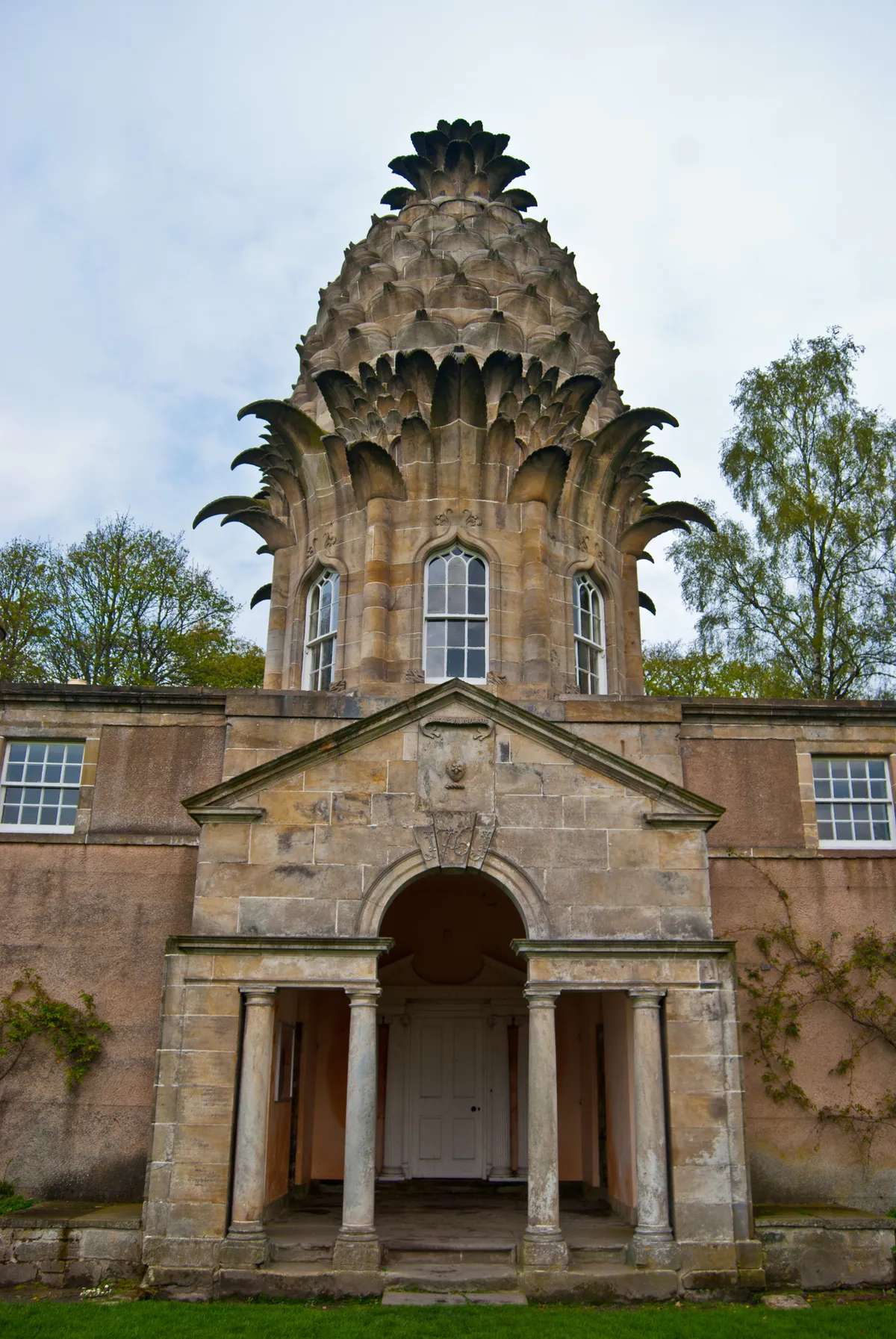
Location: Dunmore Park, Stirling OS Explorer Map ref: NS 889 885
It’s clear to see why this fruity folly is called The Pineapple, though Scotland’s contribution to our top 10 is not to be scoffed at. This structure was built in 1761 by the Earl of Dunmore, John Murray, as a garden retreat and hothouse.
Legend has it that its unique design came about because Dunmore was the site of the first pineapple grown in Britain, but more likely is that pineapples, a rare delicacy in the 18th century, were a symbol of power and wealth. The Pineapple is 15m (50ft) high and is situated on top of an octagonal tower, and – now maintained by the National Trust of Scotland – is used as exclusive rentable holiday accommodation.
Leith Hill Tower
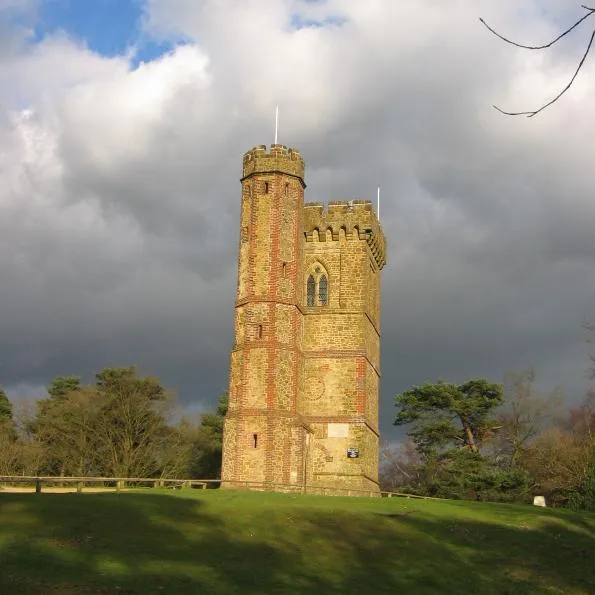
Location: Holmbury St Mary, Surrey OS Explorer Map ref: TQ 139 431
Leith Hill Tower is a fine example of the builder showing folly in his work. At the top of Leith Hill you’ll find this 20m (64ft) tall tower, built in 1765 by Richard Hull. On a stone plaque he proudly states he built it for his own enjoyment and for anyone who wished to savour the views of London and the English Channel. Hull also maintained that on Judgment Day the world would be turned upside down, so he was buried on his head to ensure he’d be in the correct position when meeting his maker. During restoration in 1984 a National Trust worker, drilling into the concrete base of the tower, found Hull’s tomb.
Find out more information about visiting Leith Hill Tower
The House In The Clouds
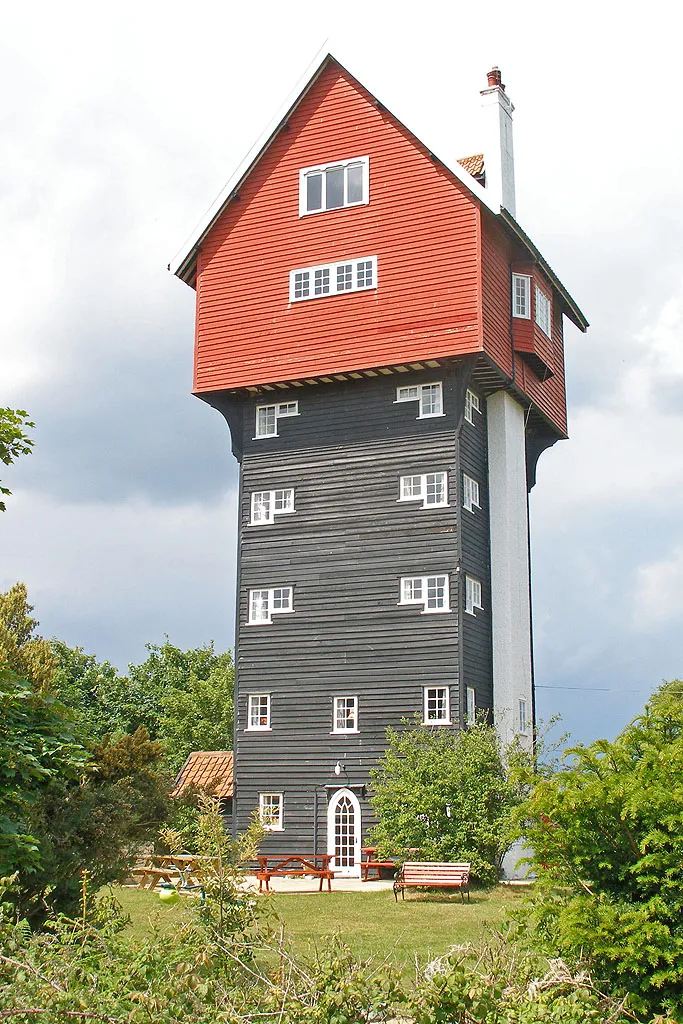
Location: Thorpeness, Suffolk OS Explorer Map ref: TM 469 597
Modern planning constraints and the rising cost of labour put pay to folly building, but some still date back to more recent times. The House In The Clouds was originally constructed as 50,000 gallon water tower by Braithwaite Engineering Company of London in 1923 - not the typical 18th century folly.
Architect Glencairne Stuart Ogilvie transformed it from an eyesore into a house lodged 21m (70ft) high in the trees shortly after it was first constructed, dedicating the design to Mrs Malcolm Mason, a local writer of children’s stories. In 1979 the water tank was removed to become a vast room, the windows became functional rather then fake, and now there are five bedrooms and three bathrooms, making it the perfect holiday home for larger families wanting a fairy tale break.
Tollymore
Location: Newcastle, County Down OS Map ref: J 376 307
There are several pretty 19th-century garden follies to enjoy in Tollymore, at the foot of Northern Ireland’s Mourne Mountains, including a Gothic church that’s actually a barn which now contains a cafe and visitor information.
You’ll also get to enjoy funny stone cones atop gate piers and a Gothic-style gate arch. All of these follies owe their individual design to one Thomas Wright of Durham, who was a friend of Lord Clanbrassil, owner of Tollymore in the early to late 1700s.
If you walk along the Shimna River you’ll find a few natural and artificial distractions, including wonderful bridges, pillars, grottos and caves and other stone follies. Tollymore, Northern Ireland’s first forest park, also has an impressive arboretum and oak from here was the chosen material for the interior of the Titanic, which was built in Belfast.
Find out more about Tollymore
More fantastic places to visit
- Britain's most haunted places
- Britain's most romantic places
- Best historic homes with links to literary heroes